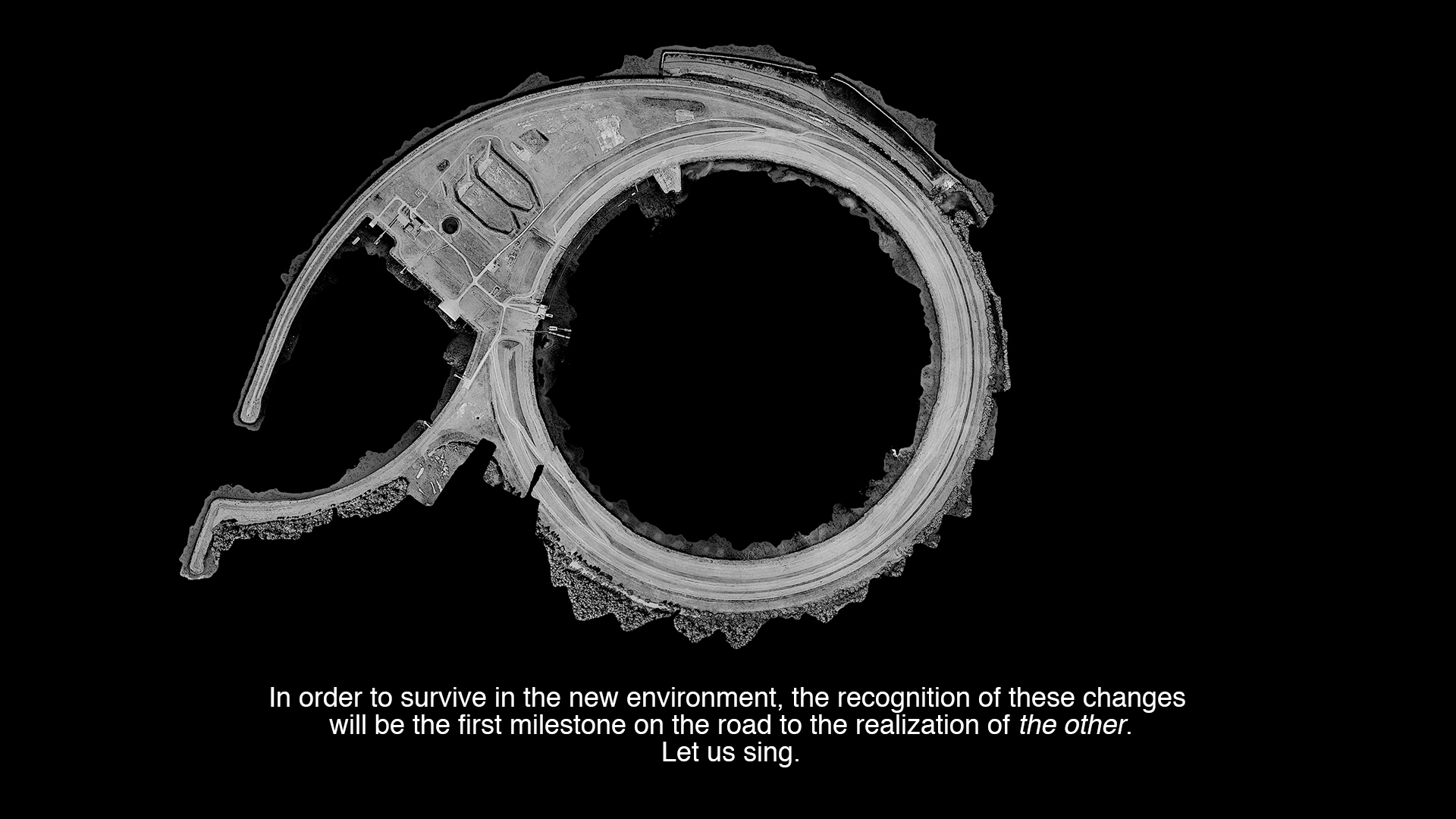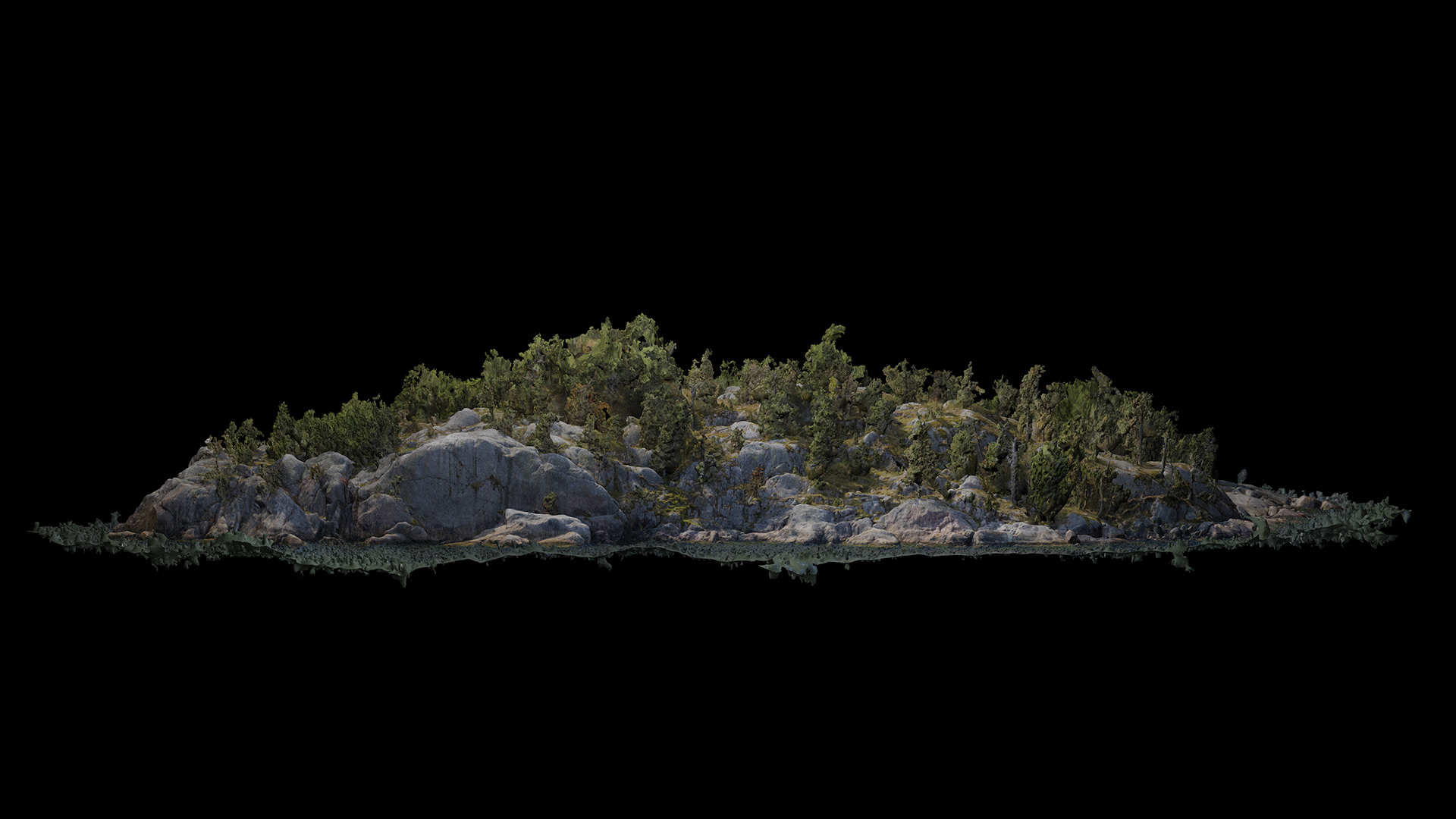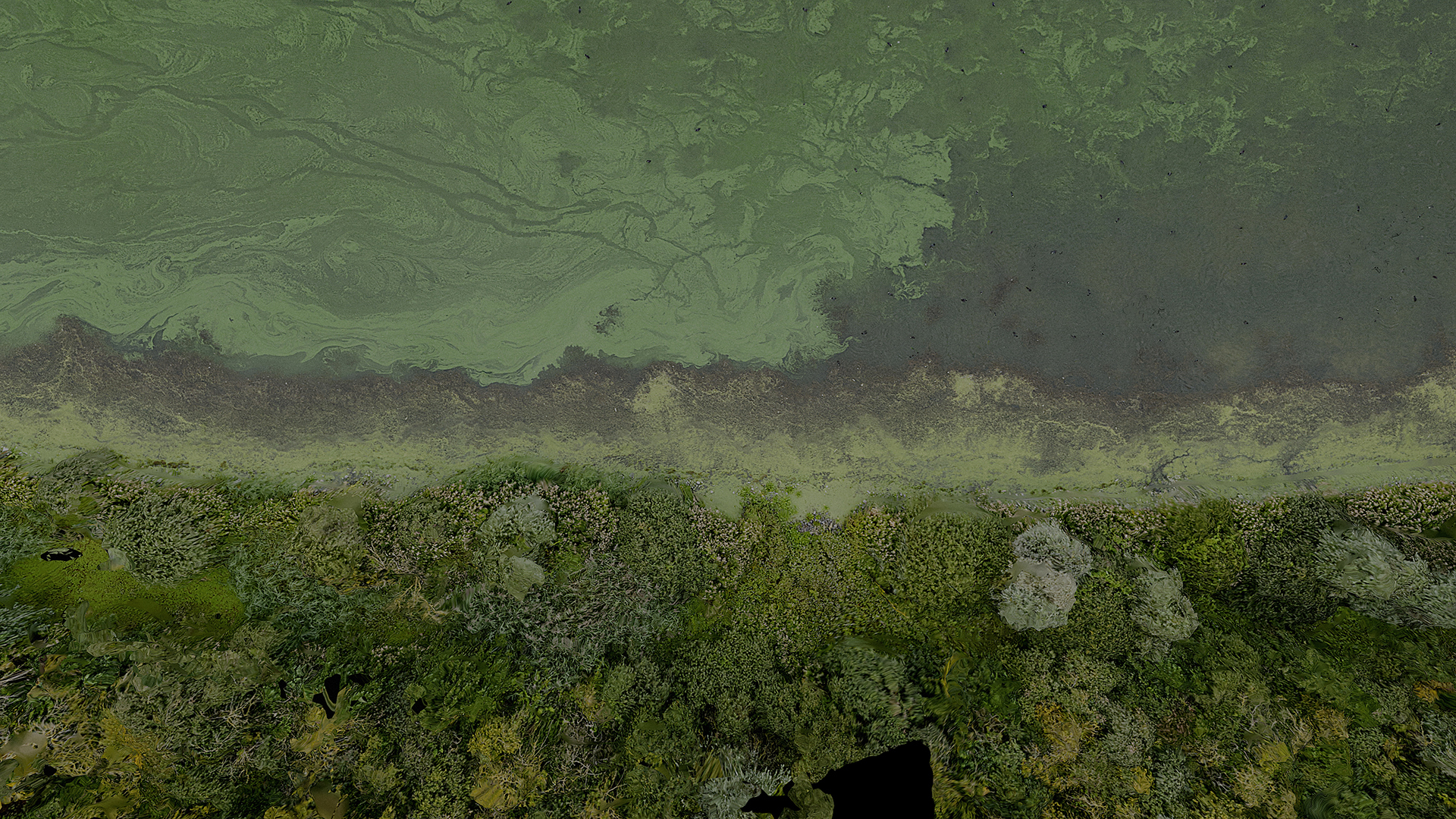Tivon Rice: Models for Environmental Literacy
Artist(s):
Title:
- Models for Environmental Literacy
Exhibition:
- SIGGRAPH 2021: Art with an Impact
-
More artworks from SIGGRAPH 2021:


Creation Year:
- 2020
Medium:
- 3d model
Category:
Artist Statement:
Models for Environmental Literacy is a series of experimental digital animations combining drone photogrammetry with A.I. generated narratives. These videos creatively and critically explore the challenges of describing a landscape, an ecosystem, or the specter of environmental collapse through human language. The project further explores how language and vision are impacted by the mediating agency of new technologies. How do we see, feel, imagine, and talk about the environment in this post-digital era, when there are indeed non-human/machine agents similarly trained to perceive “natural” spaces? This project explores these questions, as well as emerging relationships with environmental surveillance, drone/computer vision, and A.I.
In the face of climate change, large-scale computer-controlled systems are being deployed to understand terrestrial systems. Artificial intelligence is used on a planetary scale to detect, analyze, and manage landscapes. In the West, there is a great belief in ‘intelligent’ technology as a lifesaver. However, practice shows that the dominant A.I. systems lack the fundamental insights to act in an inclusive manner towards the complexity of ecological, social, and environmental issues, while the imaginative and artistic possibilities for the creation of non-human perspectives are often overlooked.
Models For Environmental Literacy explores in a speculative manner how A.I.s could have alternative perceptions of an environment. Three distinct A.I.s were trained for the screenplay: the SCIENTIST, the PHILOSOPHER, and the AUTHOR. The A.I.s each have their own personalities and are trained in literary work— from science fiction and eco-philosophy to current intergovernmental reports on climate change. The project brings them together for a series of conversations while they inhabit scenes from scanned natural environments. These virtual landscapes have been captured on several field trips that I undertook with FIBER (Amsterdam) and BioArt Society (Helsinki) over the past two years. Models For Environmental Literacy invites the viewer to rethink the nature and application of artificial intelligence in the context of the environment.
Chapter 1: Whisper Poems maps the small islands surrounding Helsinki, which are rising twice as fast as the surrounding waters of the Baltic Sea. This is part of a 10,000 year process of post-glacial rebound, so instead of reflecting an uncanny image of human intervention, they present a more paradoxical image of a system operating in geo-historic rather than human timeframes.
Chapter 2: Circular Conversations maps the Ijsseloog, arguably the strangest visual landscape in the Netherlands — a perfectly circular island, 1 kilometer across, built for the deep storage of industrial toxic sediment. After first seeing this circle on satellite images, then during subsequent field trips to drone-photograph the site, I couldn’t help imagining it as a kind of monumental frame upon, or a portal into the past, present, and future of the local environment. In some ways, the Ijsseloog is a kind of punctuation mark (like a period or a comma) in the story of the Zuiderzee Works, the land reclamation project that shaped the Netherland’s northern coastline.
Chapter 3: Echo Chambers focuses on the southwest of the Netherlands, where the Delta Works creates a different kind of engineered environment. During FIBER’s “Cartographies of the Vanishing Now” workshop, we traveled to the Volkerak to observe the algae blooms lining the shores, and to discuss the complex cultural, hydrological, and agricultural histories that have deeply impacted that ecosystem.
This work was commissioned by FIBER for the 2020 festival and has been made possible with support from the Creative Industry Fund NL, Stroom Den Haag, Google Artists and Machine Intelligence, BioArt Society, and The University of Washington Center for Digital Art and Experimental Media.







